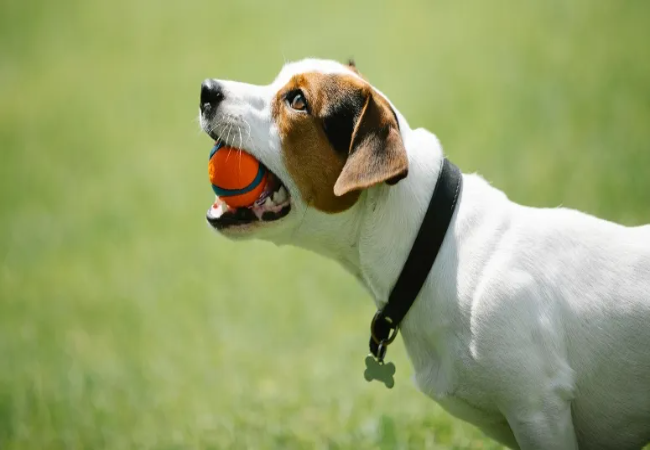Parson Jack Russell Terrier Guide 2025: Vet Approved Care & Training ✅🐾

In this article
Parson Jack Russell Terrier Guide 2025: Vet Approved Care & Training ✅🐾
By Dr. Duncan Houston BVSc
Introduction 🌟
The Parson Jack Russell Terrier (often called Parson Russell Terrier or PRT) is a spirited, long‑legged working dog bred in mid‑1800s England by the Reverend Jack Russell for fox hunting. Known for intelligence, stamina, daring personality, and strong prey drive, this breed thrives on purpose and activity. Our 2025 guide offers complete insight—from history and temperament to grooming, health, training, and real‑world fit.
1. History & Origins 📜
- Bred by Rev. John "Jack" Russell (1795–1883) in Devon to work with hounds and hunt foxes underground.
- Longer‑legged Parson Russell type separated from shorter Jack Russells over 20th century; the UK Kennel Club recognized the Parson in 1990 and the AKC in 1997 (name updated 2003).
- Versatile working lines retain strong hunting instincts, often competing in agility, earth‑dog, flyball, and tracking.
2. Size & Appearance 🧩
- Height: 12–15 in (30–38 cm); Weight: 13–17 lb (6–8 kg).
- Athletic, compact, square outline with longer legs than Jack Russells.
- Coat: smooth, broken, or rough—white with black, tan, or tri markings; minimal grooming required.
- Expressive almond eyes, V-shaped drop ears, and a sturdy rectangular build.
3. Temperament & Personality ❤️
- Bold, intelligent, high-energy, with an eager, playful streak—often described as clownish yet affectionate.
- Independent thinkers with strong prey drive—may bolt if they detect small animals.
- Excellent with families when socialized early, but they require supervision around kids and pets due to exuberance.
- Alert barkers—useful watchdogs, but can be vocal if bored.
4. Exercise & Enrichment 🏃♂️
- High exercise needs: at least 1‑2 hrs daily, including walks, brisk play, agility, or flyball.
- Thrive in dog sports: agility, obedience, nose‑work, earth‑dog events.
- If energy isn’t channeled, they can become destructive, bark excessively, or dig tunnels under fences.
5. Grooming & Coat Care ✂️
- Coat care is minimal: weekly brushing and monthly baths suffice; broken/rough coats may need stripping.
- Routine maintenance: nail trims, ear checks, dental hygiene;
- Short coat sheds moderately, manageable with occasional grooming mitt.
6. Health & Lifespan 🩺
Lifespan: 13–16 years.
Common Health Concerns:
- Primary lens luxation, cataracts, PRA—genetic eye testing advised.
- Patellar luxation and deafness—screen via OFA and BAER where available.
- Pulmonic stenosis (heart murmur) occurs congenitally—veterinary evaluation recommended.
- Spinocerebellar ataxia—linked to KCNJ10 mutation, may present as tremors or seizures.
- Generally hardy—live longer than many breeds.
7. Nutrition & Feeding 🍽️
- Feed high-quality small/medium-breed kibble twice daily, with portions sized to activity level.
- Use AAFCO-compliant food; consider dental-formula kibble for oral health.
- Supplement with omega‑3s for skin, coat, joints, and heart support.
- Prevent weight gain—feed measured meals, limit treats.
8. Training & Socialization 🎓
- Begin early—puppy socialization and obedience create confident, well-rounded dogs.
- Positive reinforcement is essential; games and challenges maintain engagement.
- Recall training critical due to independent prey drive—long‑line backups advised.
- Channel energy into structured outlets like agility and tracking to curb undesirable behaviors.
9. Family Fit & Living Conditions 🏡
- Best for active families, sports enthusiasts, or multi-dog homes—thrives with interaction and purpose.
- Good with kids and dogs when supervised; cautious around small pets unless trained.
- Not ideal for inattentive owners or high-rise apartments without access to active outlets.
10. Pros & Cons ⚖️
- ✅ Pros: Energetic, intelligent, athletic, healthy, long-lived.
- ⚠️ Cons: Very high energy demand, strong prey drive, vocality, escape risk.
11. Adoption & Breeder Guidance 🌟
- Select breeders testing for eyes, heart (pulmonic), patella, and PRA; ask for OFA/BAER certifications.
- Rescues available—sometimes surrendered if owners unprepared for activity levels.
- Expect price range: $1,000–2,500 depending on bloodlines and testing.
12. FAQs ❓
- Are they the same as Jack Russells? No—Parsons are longer-legged, bred to a specific conformation standard; Jack Russells vary more in size and style.
- Do they shed? Moderate shedding; routine brushing keeps coat manageable.
- Are they good with kids? Yes—very playful, but supervise due to energetic nature.
- Can they live in apartments? Possible—but only with rigorous exercise and mental stimulation.
- How long do they live? Typically 13–16 years; health screenings boost this.
13. Ask A Vet, 🐶
- Ask A Vet: Guidance on eye/heart screening protocols, joint health, escape-proof fencing, and mental wellbeing.
14. Final Thoughts ✅
The Parson Jack Russell Terrier is a dynamic, intelligent, and tenacious companion—perfect for owners who match its zest for life with training, energy outlets, and structured care. If you're ready for a spirited partner in adventure and sport, explore support at AskAVet.com and download the Ask A Vet app to give your PRT the best possible start!






